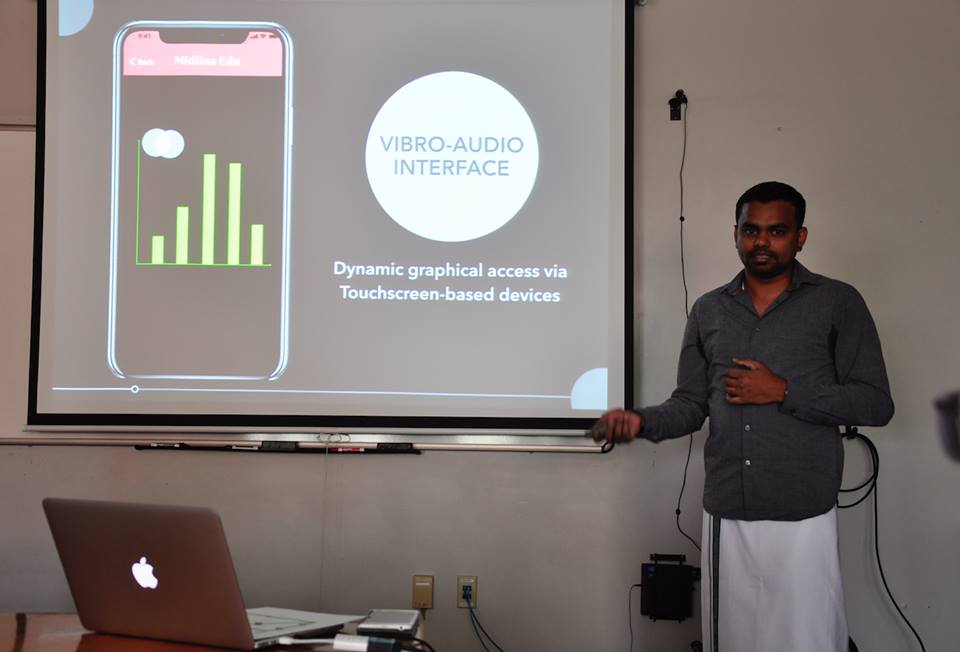Hari Prasath Palani successfully defends PhD thesis
On April 25 2018, Hari Prasath Palani (Advisor: Dr. Giudice) successfully defended his PhD thesis titled “Principles and Guidelines for Advancement of Touchscreen-Based Non-visual Access to 2D Spatial Information”. Congratulations, Hari!

Principles and Guidelines for Advancement of Touchscreen-Based Non-visual Access to 2D Spatial Information
Hari Prasath Palani
Advisor: Dr. Nicholas A. Giudice
Graphical materials such as graphs and maps are often inaccessible to millions of blind and visually-impaired (BVI) people, which negatively impacts their educational prospects, ability to travel, and vocational opportunities. To address this longstanding issue, a three-phase research program was conducted that builds on and extends previous work establishing touchscreen-based haptic cuing as a viable alternative for conveying digital graphics to BVI users. Although promising, this approach poses unique challenges that can only be addressed by schematizing the underlying graphical information based on perceptual and spatio-cognitive characteristics pertinent to touchscreen-based haptic access. Towards this end, this dissertation empirically identified a set of design parameters and guidelines through a logical progression of seven experiments.
Phase I investigated perceptual characteristics related to touchscreen-based graphical access using vibrotactile stimuli, with results establishing three core perceptual guidelines: (1) a minimum line width of 1mm should be maintained for accurate line-detection (Exp-1), (2) a minimum interline gap of 4mm should be used for accurate discrimination of parallel vibrotactile lines (Exp-2), and (3) a minimum angular separation of 4mm should be used for accurate discrimination of oriented vibrotactile lines (Exp-3). Building on these parameters, Phase II studied the core spatio-cognitive characteristics pertinent to touchscreen-based non-visual learning of graphical information, with results leading to the specification of three design guidelines: (1) a minimum width of 4mm should be used for supporting tasks that require tracing of vibrotactile lines and judging their orientation (Exp-4), (2) a minimum width of 4mm should be maintained for accurate line tracing and learning of complex spatial path patterns (Exp-5), and (3) vibrotactile feedback should be used as a guiding cue to support the most accurate line tracing performance (Exp-6). Finally, Phase III demonstrated that schematizing line-based maps based on these design guidelines leads to development of an accurate cognitive map. Results from Experiment-7 provide theoretical evidence in support of learning from vision and touch as leading to the development of functionally equivalent amodal spatial representations in memory. Findings from all seven experiments contribute to new theories of haptic information processing that can guide the development of new touchscreen-based non-visual graphical access solutions.
